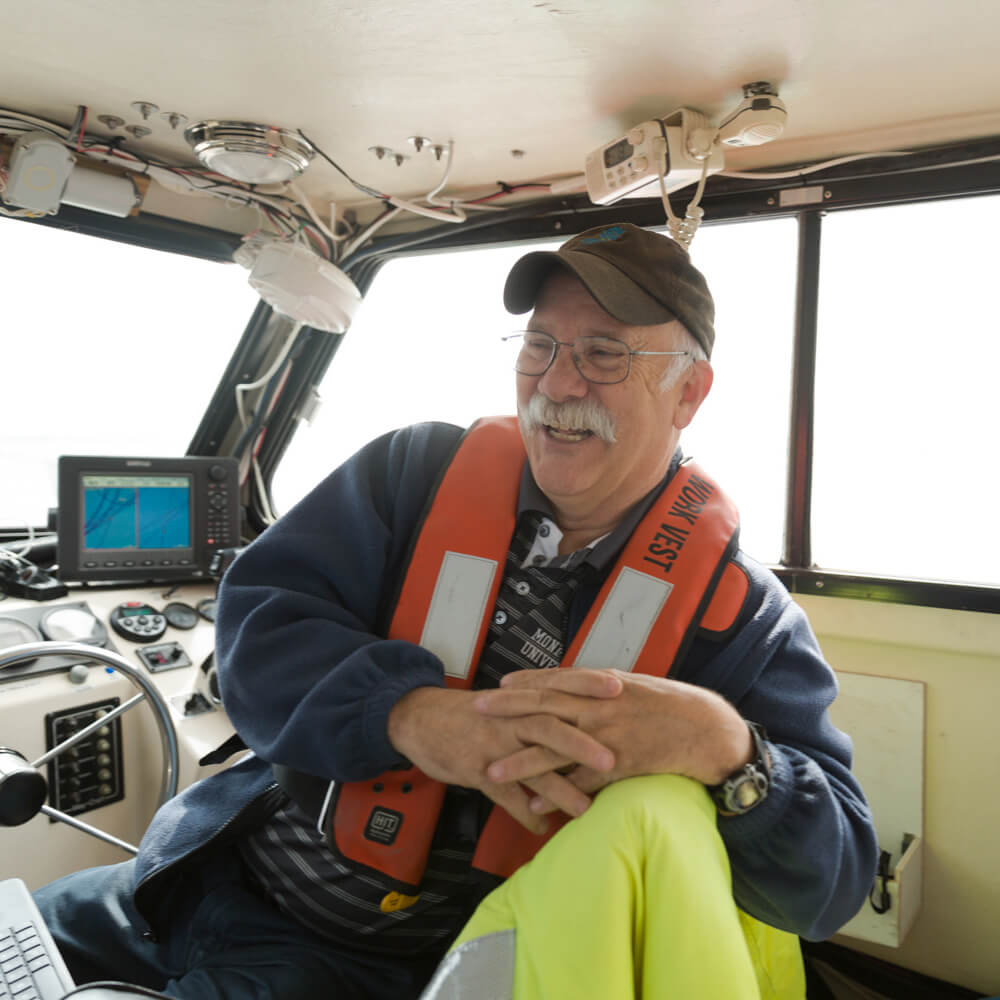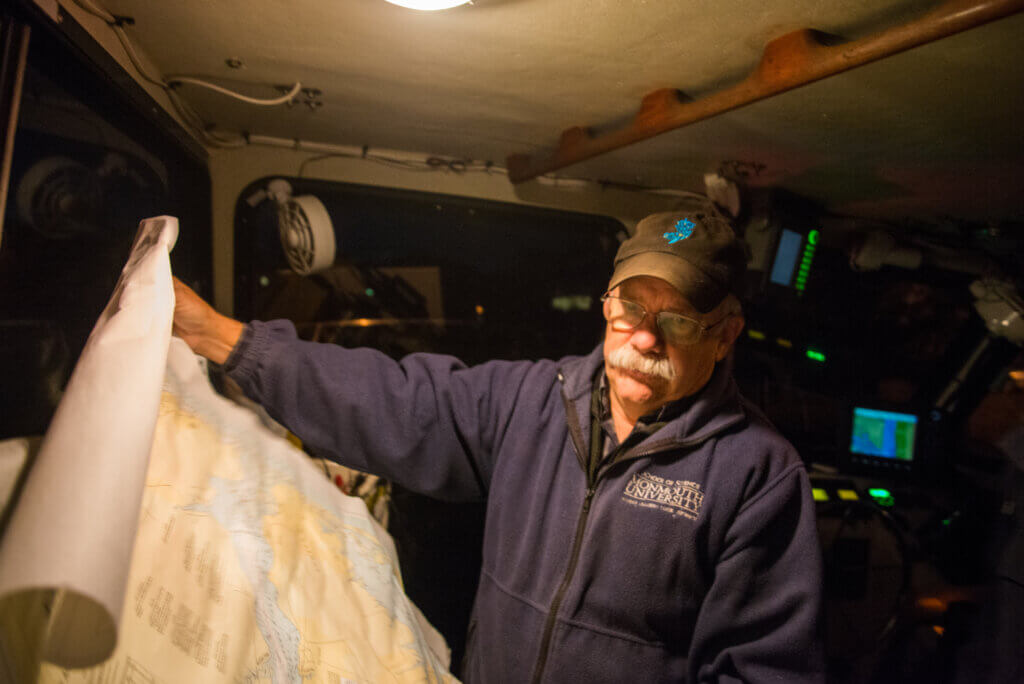
Urban Coast Institute (UCI) Marine Scientist Jim Nickels’ 16-year voyage at Monmouth University has come to a close. Nickels retired effective March 1 and will now turn his focus to spending time with family, travel and the enjoyment of life.
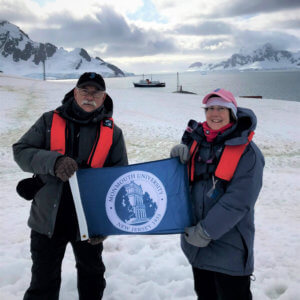
In the summer of of 2007, Nickels became one of Director Tony MacDonald’s first hires at the UCI. When he arrived, the University had one vessel – the 18-foot Little Hawk, which is still a part of the fleet. The UCI would soon acquire federal funding to purchase the 27-foot Seahawk, multibeam SONAR equipment and other marine science technologies. Nickels’ grant and contract work conducting water quality monitoring, mapping the shoreline and other research in those early days helped support the vessels while providing students with real-world field operations experience – a formula that continues successfully at Monmouth today.
Nickels, who grew up a few blocks from campus in Long Branch, is known throughout the region as a skilled mariner and an ideal collaborator. He has been a mentor to scores of students in and out of the classroom and a booster of all things Monmouth.
Nickels will continue to provide periodic assistance to the UCI and Monmouth as it onboards a new vessel captain and winds down various projects. He may also return to the classroom from time to time as a guest speaker or adjunct professor.
We sat down with Nickels for an exit interview to reflect on his time and memories from Monmouth.
Stepping back to the summer of 2007, what were the circumstances of you joining Monmouth?
I was a vice president at Aqua Survey, where I ran marine operations for close to 10 years. I wasn’t looking for a new job. A colleague sent me the help wanted ad and I was curious to learn more. I didn’t know Tony at the time, but I worked with John Tiedemann years earlier at the New Jersey Marine Sciences Consortium, so I decided to explore it. It was a significant salary cut to come here, but fortunately I was in a position that I could do it.
If you were willing to do that, there must have been something pretty attractive to you about the position.
I’d been in environmental consulting for years, and I enjoyed that. But there’s a lot of travel involved, a lot of work keeping clients happy, keeping your administration happy. And this just seemed like something that would be a nice change and a good idea to pursue. I’d worked with students before and enjoyed it.
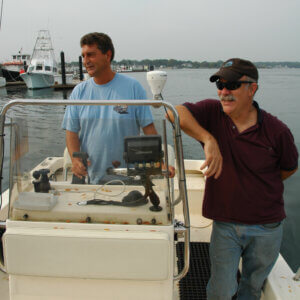
What was the state of the UCI at the time?
It was Tony MacDonald (as director) and John Tiedemann was assistant director. Jennifer DiLorenzo was dedicated to community outreach, and around that same time the UCI hired a postdoc. I was funded through a multi-year grant from the Fairleigh Dickinson, Jr. Foundation to do real-time water quality monitoring at sites in estuaries from Keyport down to Manahawkin.
When I got here, John had, through a previous Environmental Protection Agency grant, purchased a pickup truck and an 18-foot center console vessel, the Little Hawk. And that was the fleet.
And now there are three vessels. Did you have a favorite?
I like the 27-foot Maycraft, the Seahawk. It’s easily maneuverable and trailerable. I’ve been all over with it, working in upstate New York, Virginia, all over New Jersey, up in a Long Island Sound on some projects. But I’ve also really enjoyed getting the 49-foot R/V Heidi Lynn Sculthorpe up and running, because that was the one thing I was missing was, you know – my big boat envy.
What’s interesting is, this is the third organization I’ve worked for as a matter of being in the right place at the right time to basically go from almost nothing to building a marine operations program. I did that at the consortium, I did that at Aqua Survey, and then I did that here.
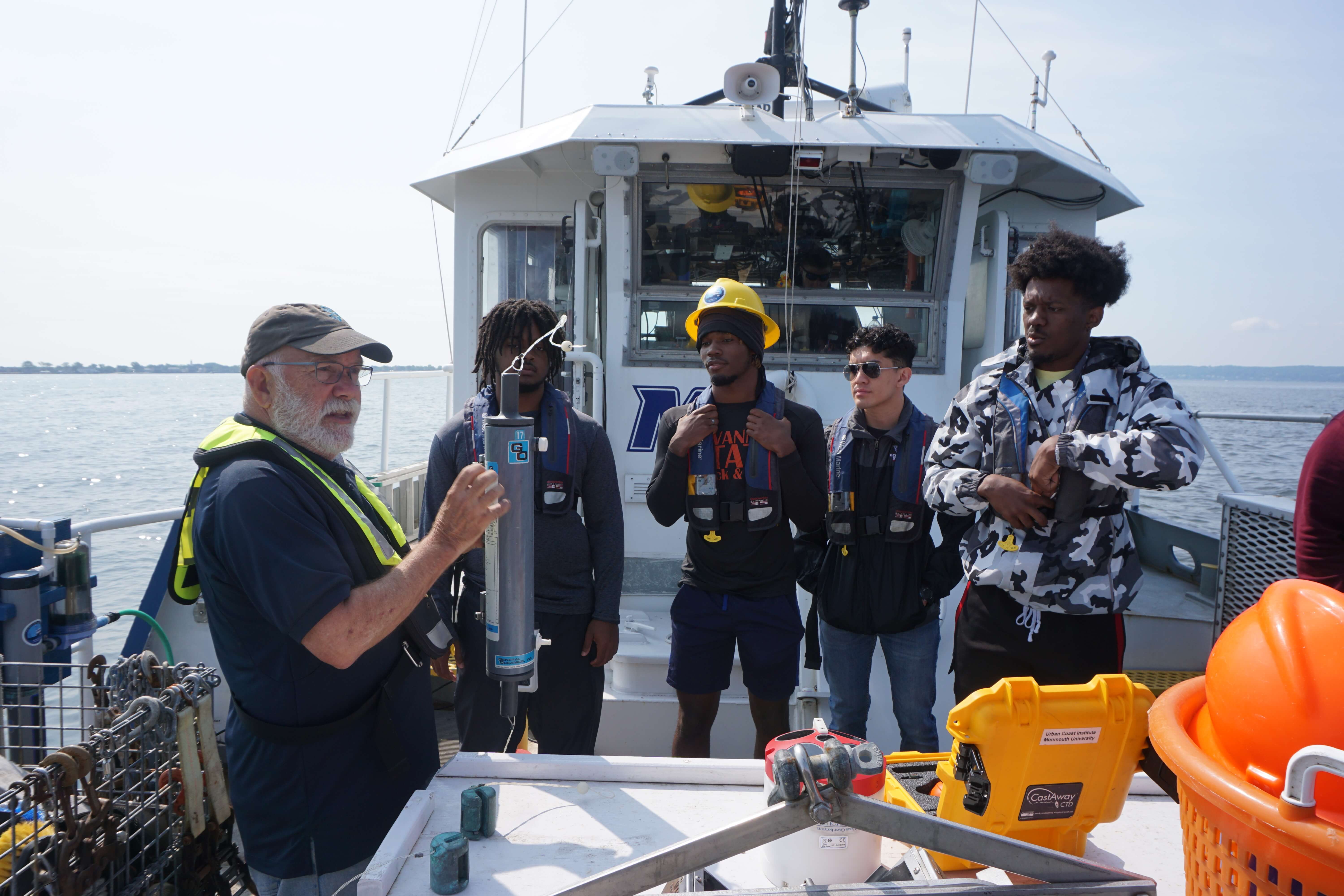
What has changed the most for the UCI from the early days until now?
We have a lot more people and we do a lot more things. We’re involved in a lot more areas, because initially, it was basically Tony, John, Jennifer and myself doing everything. We have three vessels now and a lot more equipment. And since I’ve been here, the Marine and Environmental Biology and Policy (MEBP) program has grown significantly, and we did a lot of great work together.
The first go-round of the Barnegat Bay Zooplankton Study was done as a multi-year project with (former professor) Ursula Howson and students. We had a couple of nice long-term projects for the New Jersey Department of Environmental Protection that used a lot students out on the boats once or twice per week. We even had some students from High Tech High School who came out with us for a couple of years. Those early projects were the kind of things that helped expand the UCI.
What were some of your favorite parts of the job?
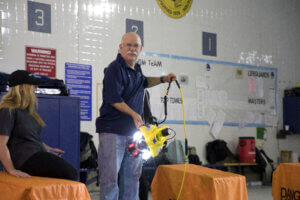
I’ve most enjoyed the opportunities I’ve had to work with students, like teaching marine field methods and marine archaeology with Rich Veit (professor of anthropology and interim provost). He already reached out to ask if I’d be willing to come back and teach that with him, so that will be fun.
I’ve had the opportunity to do a lot of local community engagement surrounding coastal lakes and post-Superstorm Sandy flood mapping. We provided 14 local towns with support from Monmouth County and FEMA with elevations for the installment of high-water mark signage.
CARP II (New Jersey Department of Transportation [NJDOT] Contamination Assessment and Reduction Project) was a very big project for us, doing sediment collection all over New York Harbor. We did a lot of initial mapping projects funded through the National Oceanic and Atmospheric Administration and then through either consulting firms or NJDOT projects. So I’ve enjoyed being able to do a lot of different things and learn new technologies as they come along, and then pass that on to students.
You’ve made a difference in a lot of students careers over the years. Do you have any parting wisdom to students who may be reading this?
I would say, whenever you have the opportunity to do internships or tag along on field work or research, take advantage of it, because I’ve had good success with former students who have gotten jobs that way. Potential employers, like the government agencies we work with, get to kick the tires a little bit to see who you are. And you get to see whether or not you like that field. The worst thing you can do is go through four years of school, or then even get a master’s degree, and realize all of a sudden, “Oh, I don’t like doing that.” If you get opportunities to go out and do things, definitely go out and do things.

